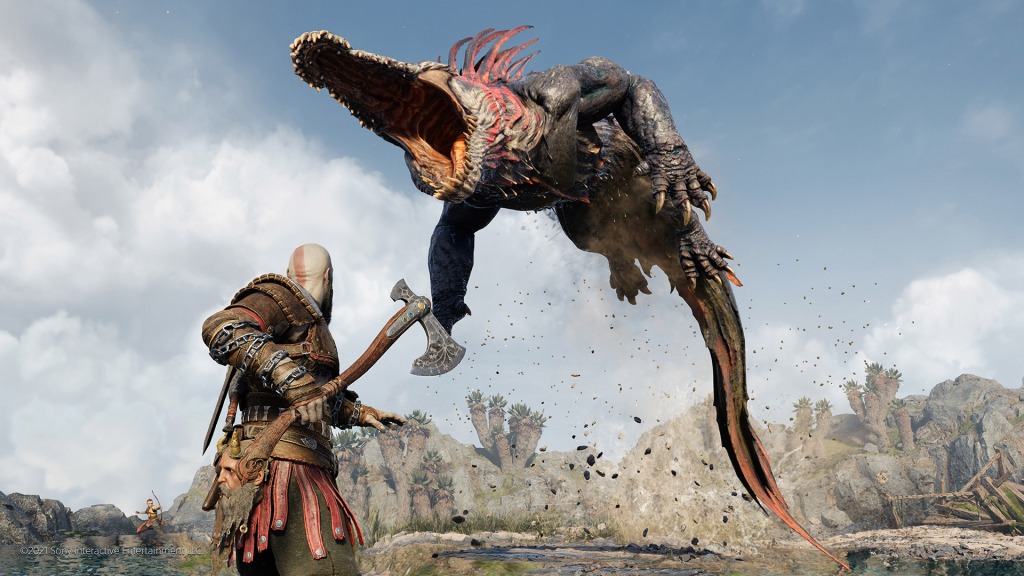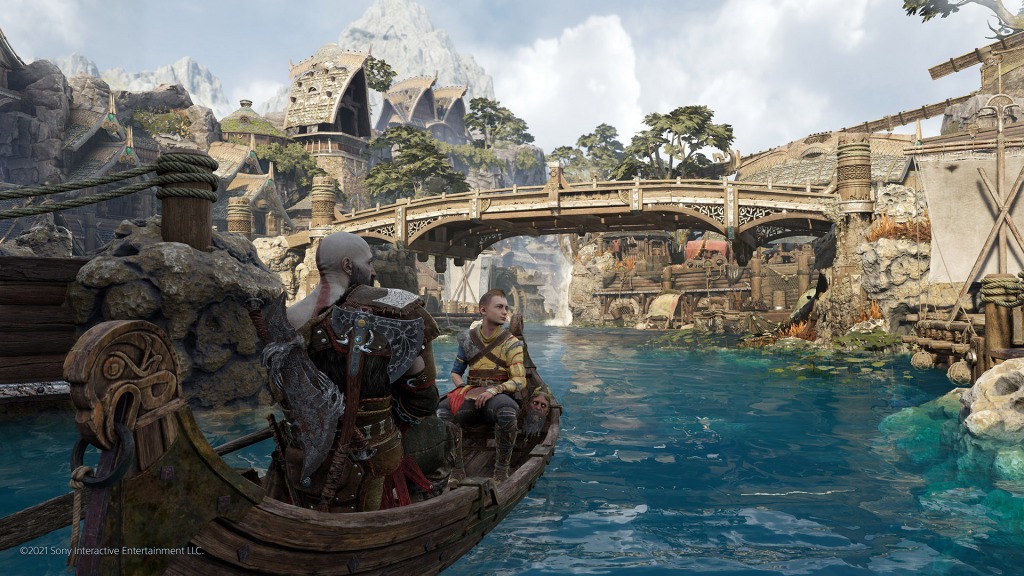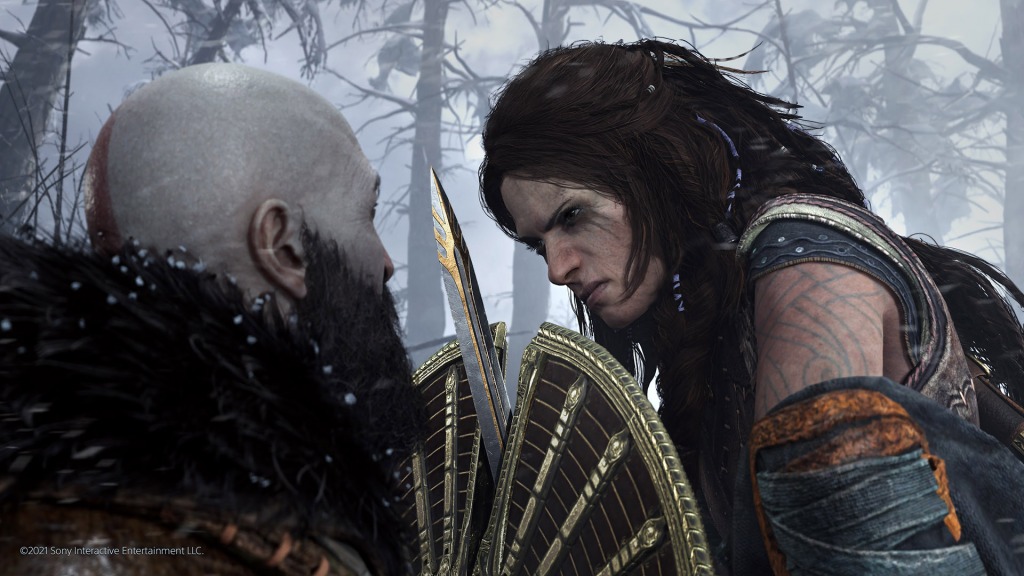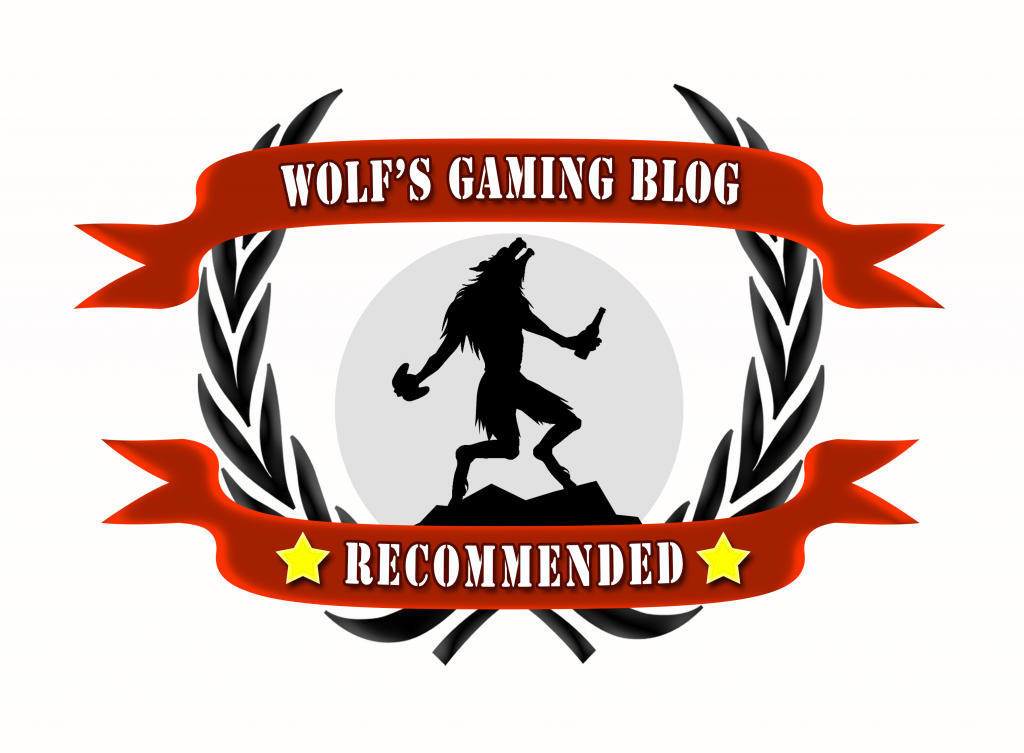
Following up on greatness is never easy. Santa Monica had the element of surprise when they revived God of War in 2018 and so when the world got to experience the epic return of Kratos it became a hit of Godlike proportions, selling millions of copies, snatching up awards like Kratos grabbing Hacksilver and becoming one of the most beloved Playstation games in history. But God of War: Ragnarock doesn’t have the element of surprise; we know what to expect now, what Santa Monica can do with the Ghost of Sparta. So after a 4-year wait, has God of War: Ragnarock delivered the epic climax we were all hoping for?
First, let’s set the expectations. Do you consider the Lord of the Rings movie trilogy to be three separate films or one massive epic? Personally, I fall into the second category, viewing them as three pieces of one giant story rather than a movie and two sequels. It might not seem important, but God of War: Ragnarock feels exactly the same. It’s less of a sequel, though improvements have been made, and more like part 2 of 2018’s God of War reboot, the game that brought back the world’s angriest man and turned him into the world’s angriest dad. Ragnarock is very much like its predecessor; a highly cinematic action-adventure game featuring vicious combat and epic moments. It doesn’t rock the boat (or in this case, sled) too much. It doesn’t completely reinvent the series yet again. In other words, if the adventures of Kratos and his son didn’t grab you in 2018, they probably aren’t going to grab you now.
We pick up two years after the events of the 2018 game and find Kratos and Atreus surviving Fimbulwinter, the harsh winter that comes before Ragnarock, the end of the world. Deep snow blankets Midgard and the other realms are all suffering, too. The father and son duo are under near constant attack from Freya who still mourns the death of her son Baldur at the hands of Kratos. Despite all of this hardship, the relationship between the pair has continued to grow, softening the vengeful God of War to the point where he can place a loving hand on Atreus’ shoulders without a second thought and is a far more capable parent. Atreus is becoming a worthy fighter in his own right, more assured in himself, and with that comes a burgeoning personality as he comes into his own identity, all while grappling with the concept that he is also Loki, seemingly prophesied to play an important role in Ragnarock.
Available On: Playstation 4 & 5
Reviewed On: Playstation 5
Developed By: Santa Monica Studios
Published By: Sony
Things can never be peaceful for the God of War, though: in the same way that trouble arrived in 2018, Thor comes knocking on their door, a huge, looming figure whose mere presence screams casual violence. Instead of seeking revenge for the death of his sons, he instead asks Kratos to sit. He’s simply here to prepare them for the arrival of the game’s true villain: Odin, the All-Father. Compared to Thor he’s a small man, grandfatherly in his stature and looks. Actor Richard Schiff delivers an incredible performance as Odin, a charismatic God who is a master manipulator, abuser, and seemingly many steps ahead of everyone else. He comes preaching peace, but his real goal is to acquire the help of Loki in seeking incredible knowledge.
To delve deeper into the plot would be to skirt dangerously close to big spoilers, so I’m going to keep everything else vague. Santa Monica Studios have done a fantastic job of taking the immense, and often confusing, Norse mythology and reshaping it into an original story with twists and turns, a couple of which actually managed to make me feel some proper emotions. The writing is sharp, the plot is interesting albeit a tad muddled in places and just like the 2018 game there’s an almost absurd level of production value that makes it so, so easy to become absorbed in the action.

Thematically, there’s a lot that Ragnarock weaves into its storylines but above all else, it’s still a rumination on parenthood, the desire to be better for your children, and how a parent’s failures can destroy future generations. This is wholly embodied in Odin’s own son Thor, a being of immense power who has been reduced to a drunken sot by his father, used purely as a tool and struggling not to visit his mistakes on his daughter. He’s a fascinating character, a huge contrast to Marvel’s Thor – he doesn’t look like he’s been carved from marble like Chris Hemsworth, he’s got a massive belly and a penchant for booze, and yet he’s an intimidating presence who wields Mjolnir with indifference. He’s the kind of God who can believably go toe-to-toe with Kratos and come out the winner. Although Odin is a terrific foil, I think Thor might be my favourite character in the whole game. Every time he came on screen I was fascinated, all thanks to the writing and absolutely fantastic portrayal of the God of Thunder by Ryan Hurst.
As for Kratos, he’s more human than ever, able to open up to others and share stories of his past. Make no mistake, though: he’s still grumpy and a man of few words, but by his own standards he’s practically bursting at the seams with emotions. For all of his improvements, though, he can still struggle to contend with a son who wants to go out into the world and help people. Kratos can still easily slip back into old habits, especially when people start threatening his son’s life. The rampaging God of War still lurks just beneath the surface, ready to unleash hell. Both father and son get solid, touching story arcs throughout the game as both begin to learn what it means to live with each other, and away from each other. And once again, Christopher Judge delivers a masterclass of acting, imbuing the brooding God with a gravelly gravitas and a range of tiny facial movements that do so much to add depth.
Sticking with the core themes of Atreus becoming his own person with his own goals, beliefs and ideals, we get to take direct control of the young lad numerous times. It’s a ballsy move to shift away from Kratos and his excellent combat skills even for a little bit, yet it does make perfect narrative sense. Atreus is an effective warrior too, wielding his bow with skill and able to wade into melee combat, too, using a far more agile and speedy style than his dad. Unfortunately, his heavier focus on ranged combat doesn’t feel as satisfying and fun as the much meatier Leviathan Axe and Blades of Chaos that Kratos wields. His swipes with the bow at close-range don’t have much sense of impact, either. Still, it’s a nice change of pace to control Atreus whose much more optimistic world view contrasts nicely with the dour Kratos.
I do reckon Atreus’ teenage behaviour might cause more than a couple of people to throw their hands up in the air, though. I’ve noted more than a couple of folks describe him as infuriating, but I thought the writers at Santa Monica did a good job of portraying him as a teenager in a difficult decision, with all the bad decision-making and foibles that come with the age.

It’s not just the father and son duo who get character arcs. Ragnarock widens its scope a bit, taking the cast of secondary characters from the 2018 game and investing heavily in giving them far more screen time. Chief among those is Brok and Sindri, the bickering dwarf brothers who not only open their home to you, which acts as a hub of sorts, but also tag along on various quests. The brothers get a great story, as does the grieving Goddess Freya. A whole bunch of new characters also turn up, though they mostly suffer the same fate as the cast in the 2018 game, by which I mean they’re fairly basic in their characterization. I do, however, love the fact that we get to spend time with Thor, Odin and the Asgardians. It’s a great move because Odin is a terrific villain whose goals and reasons are compelling and the writers find ways of letting you learn about them while sticking to their one-long-camera shot principle.
To put it simply, I adored the story that Santa Monica told. It is, I think, a bit heavy of plot McGuffins at times which can leave you scratching your head, but its driving force is always the characters who are brought to life through a wealth of excellent performances, fantastic music and the same one-shot camera style of the 2018 game. It’s heavily cinematic, absorbing players into its world, although that can sometimes come at the cost of spending too much time not actually playing the game. Maybe I’m just old-fashioned or something, but as much as I enjoy Grumpy Old Man of War I still mostly want to kick ass and lengthy segments are devoted to cutscenes or plodding around a swamp on a cow. And no, I’m not making that bit up.
I do have to say, though, for a game that spends its entire time building toward the inevitable events of Ragnarock, it kind of blasts through the end of the world rather quickly. It’s weird to say this about an adventure which spans dozens of hours, but the finale feels rushed and actually seems to forget about a couple of big things that don’t impact the story but that will leave you thinking, “wait, what happened to…”
The brutally meaty combat of the the 2018 reboot has been retained except this time Kratos has the Blades of Chaos from the very start alongside the trusty Leviathan axe. It still feels amazing to hurl that axe at an enemy’s face and then summon it back to your hand at the tap of a button. Kratos swings it with a raw sense of power and rage that just taps straight into the dopamine, and taming groups of enemies with sweeps of the Blades of Chaos is equally fun. The core tenets of attacking, dodging and blocking are expertly executed, and when you dismantle a group of foes or a boss without taking a scratch you feel like the biggest badass since Chuck Norris entered an ass-kicking contest wearing steel-toe boots.

Santa Monica obviously listened to feedback suggesting that the enemy variety was a little thin on the ground and has sought to remedy it with a whole bunch of new victims to slice and dice. From tiny bugs that swarm you to all manner of big bastards, there’s a lot of different enemies to learn about, fight and destroy using savage finishing moves.
There are some new tricks in the combat to help keep everything fresh, too. The triangle button doesn’t just recall the axe anymore, now it’s used to activate your weapon’s Signature Move, infusing it with its corresponding element so that you can unleash devastation. For the Blades that means whipping them around by tapping triangle quickly before swinging them in a fiery arc, whereas the axe freezes over, ready to deliver some ice-cold pain. You’ve got to build up Momentum first, though, which you do by dishing out damage without getting hit. These new moves tie into a bunch of unlockable skills in the returning skill trees because Kratos is a videogame character and, as we all know, videogame characters can’t remember stuff between games.
But it doesn’t end there because there’s also now multiple shields to pick from that all have special little tricks and abilities to consider, and Kratos is slightly more agile now thanks to grappling points that let him swing around the place like an angry Tarzan. There are even special aerial moves when you come off of those grappling points or for when you run straight off of a platform. These changes help the combat flow more smoothly, giving you other things to do when waiting for the special Runic attacks to recharge.
Although it comes a little late in the game, Kratos gets his meaty mitts on a brand new weapon that I won’t spoil here, bringing his total up to three that you can instantly swap between on the D-pad. As fun, brutal and satisfying as the core combat is, this third tool adds some much needed variety to the mix. Taking into account all the other new tricks Kratos has learned, the fighting is more robust than ever and feels absurdly good. Seriously, it’s impossible to describe how good tapping out light and heavy attack combos feels, but if you played the 2018 game you’ll already be familiar with just how good it is.

For a game where you play as the titular God of War, though, there sure are a lot of moments where you wind up feeling like the God of Puzzles, or even the God of Squeezing Through Small Spaces. Yes, both things are back in what feels like even greater amounts. Most of the puzzle designs are instantly familiar: smash runes to unlock a chest, spin cranes around to open up grapple points and so on. Some new mechanics have been added into the fray, like bouncing axes off of strange crystals. The biggest addition is using special Runic arrows to transfer elemental effects, like fire from the Blades of Chaos, to objects. It’s a fine idea on paper but in reality it proved a frustrating process of trial and error because even when it seemed like it should work, it didn’t. That and puzzles still often rely less on brainpower and more on playing find the object or spinning stuff around.
As for having to squeeze through spaces, slowly climb sections of cliffs or using the fast-travel through the World Tree, all of these feel like direct results of Ragnarock having to run on the older PS4. Many developers have pointed out that sections like this aren’t just for hardware limitations but for other reasons too and that is undoubtedly the case. However, given the sheer amount of slow moments where Kratos crawls through a space, clambers up a wall (especially when other walls let him zip straight up using the Blades) or pushes himself through a narrow gap I feel confident in saying at least some of these are to allow the PS4 to get everything loaded and ready to go. You really notice it when fast travelling using the World Tree because you still have to amble along (or just stand still) while you wait for the magic door to spawn. The PS5 speeds this process up so that if there’s no exposition the doorway appears reasonably quickly, but it’s still a little annoying to see Ragnarock being held back, especially when other games have such speedy travelling, like Ratchet & Clank: Rift Apart.
Despite my harsh words, though, I do think Sony and Santa Monica were correct in their decision to put Ragnarock on both consoles. While I cannot wait to see what Santa Monica are able to do when unchained from the older PS4 hardware, this new God of War journey began on the PS4 and it would be a shame for potentially millions of people to miss out on part 2 of this amazing saga because the PS5 is still too expensive or because they’ve struggled to find one in stock.
That brings me to the game’s performance, visuals and other bits and bobs. On the Playstation 5 there are two graphical options: the first offers all the Ray-Tracing and visual upgrades while running at a consistent and solid 30FPS. Personally, though, I opted for the performance mode which forgoes some of the fancy bells and whistles in order hit a silky-smooth 60fps that makes the combat feel even better. Whichever mode you opt for the performance is almost impeccable, and I only encountered a single bug that made a chest unreachable until I restarted the game.

And, of course, we can’t go without mentioning how bloody beautiful the game is. While there hasn’t been a gigantic shift in graphics since God of War in 2018, there have been plenty of small improvements that have taken an already great-looking game and made it even better. But for me, it’s the mix of the full mocap and the animations that sell everything. The opening moments are a prime example as Kratos sits before a fire and reflects on his life. The tiny emotions that flicker across his face do so much to humanize a character who has laid waste to pantheons of gods, and it’s all thanks to the full motion capture and actor Christopher Judge.
The first game was built around the Lake of Nine which acted as a giant hub that would gradually change to unlock new sections. It was a smart piece of design that I really liked, but many people wanted more sense of variety and Santa Monico have responded. Ragnarock is a traipse through all nine realms, and several of them now have big hubs of their own, complete with heaps of amazing side missions. Vanaheim is easily the largest, especially since it has a massive extra area that you can miss entirely if you don’t complete a certain side quest. Most games have a notable drop in production values between the main quests and the side content, which is perfectly understandable due to budget constraints, development time and all that. There really isn’t a gap in Ragnarock, though: all the side content feels like its had just as much time and attention lavished upon it as the rest, with multiple optional activities containing awesome set-pieces and story beats. There’s even some cool bonus stuff to do after you wrap up the story, although there’s currently not New Game+. That’ll probably come later.
Just like before as you explore the realms, heave open chests and defeat hidden bosses, new armour sets and the resources needed to craft and upgrade them will be acquired. I’ve read some criticisms that the loot system in God of War didn’t really work, but I personally love building a new armour set and being able to tweak the stats to match my preferences. My only issue is the number of different resources is excessive and pointlessly confusing. And I will say, there are a few too many armour sets that are simple reskins of each other.
Going into any sequel, especially one that follows a commercial and critical darling, always raises questions of how the developers can top their own work. Within the gaming community, there’s a feeling that sequels always need to be bigger and better, and perhaps that’s a little unfair. And when the game is as good as God of War, how exactly do Santa Monica improve it? It’s nearly impossible to say whether Ragnarock is a better game than its predecessor because it feels so much like part 2. It’s just the same as trying to choose the best of the Lord of the Rings films. It’s not that it can’t be done, it just shouldn’t be done.
Ragnarock is absolutely fucking stunning, a triumph in every way that acts as a fitting end for the story of Kratos, if that’s what Santa Monica choose to do. It has been such an impressive journey, turning one of the most basic ‘angry dude’ characters in all of gaming into one of the most fascinating. Kratos is more human than he has ever been, more relatable and likeable, and yet he is just as much of a badass, easily making him an icon in our hobby. This game has clearly been a long, hard labour of love for Santa Monica and for everyone that took part in its creation. The combat is vicious and rewarding, the exploration is fun, the story is filled with cool moments and memorable characters, and through it all is an emotional, well-told tale of a father and son just trying to be better.





